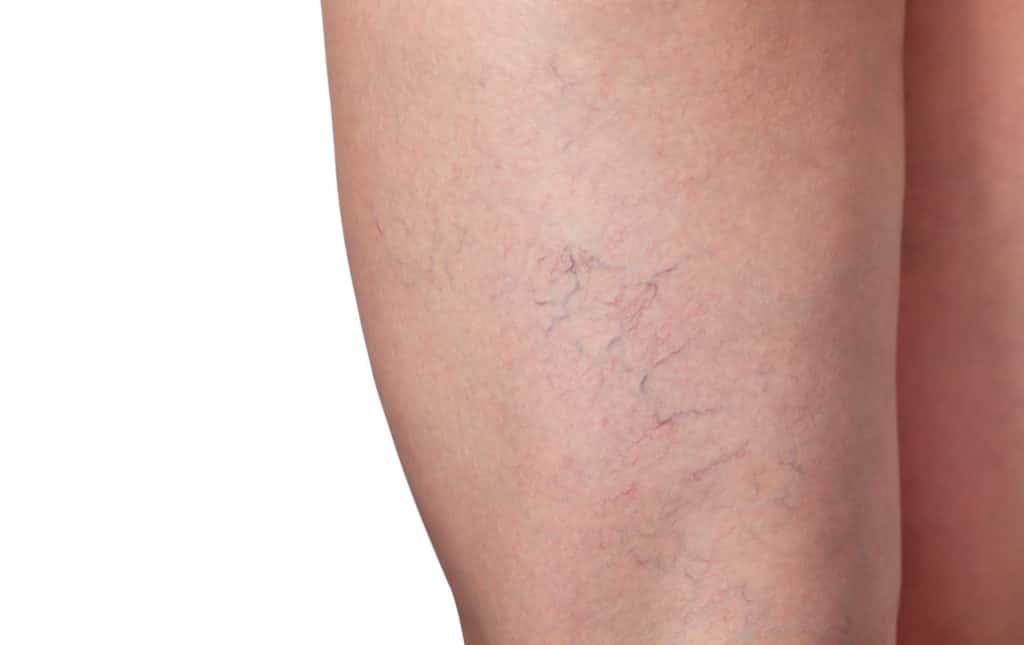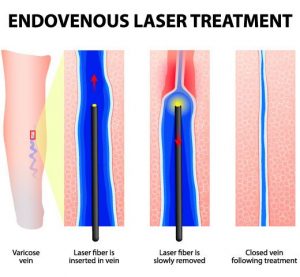
Varicose Veins
Varicose veins are swollen, twisted veins that you can see just under the skin. They usually occur in the legs, but also can form in other parts of the body. Hemorrhoids are a type of varicose vein.
Your veins have one-way valves that help keep blood flowing toward your heart. If the valves are weak or damaged, blood can back up and pool in your veins. This causes the veins to swell, which can lead to varicose veins.
Varicose veins are very common. You are more at risk if you are older, are female, have obesity, don’t exercise, or have a family history of varicose veins. They can also be more common in pregnancy.
Doctors often diagnose varicose veins from a physical exam. Sometimes you may need additional tests.
Exercising, losing weight, elevating your legs when resting, and not crossing them when sitting can help keep varicose veins from getting worse. Wearing loose clothing and avoiding long periods of standing can also help. If varicose veins are painful or you don’t like the way they look, your doctor may recommend procedures to remove them.
Types of Treatments For Varicose Veins
If the patient has no symptoms or discomfort and is not bothered by the sight of the varicose veins, treatment might not be necessary. However, if there are symptoms, treatment may be required to reduce pain or discomfort, address complications, such as leg ulcers, skin discoloration, or swelling.
Some patients may also want treatment for cosmetic reasons – they want to get rid of the “ugly” varicose veins.
Dr. Sergio Verduzco performs two types of treatments: Sclerotherapy and Laser Vein Removal
Sclerotherapy
Sclerotherapy uses injections from a very fine, thin needle to improve the cosmetic appearance of spider veins, treat small varicose veins in the legs, and relieve related symptoms such as aching, burning, swelling and cramping. Each treatment session typically results in elimination of 50 to 80 percent of the injected veins.
Laser Treatment
A laser is a highly focused beam of light. A doctor can use a laser to treat varicose veins. Laser heat damages a vein, which makes scar tissue form. This scar tissue closes the vein. A closed vein loses its source of blood and dies. After a year or two, the vein is likely to disappear.
Simple laser treatment.
Simple laser vein treatment is done on the outside of your skin. It can treat spider veins and tiny varicose veins just under the skin’s surface. Usually, more than one laser session is needed. They are scheduled every 6 to 12 weeks, as prescribed by Dr. Sergio Verduzco. (If you have poor blood circulation feeding these tiny veins, the larger “feeder” vein must first be treated with surgery, endovenous laser or radiofrequency treatment, or sclerotherapy.)
Endovenous laser treatment.
Endovenous laser treatment can treat larger varicose veins in the legs. A laser fibre is passed through a thin tube (catheter) into the vein. While doing this, the doctor watches the vein on a duplex ultrasound screen. Laser is less painful than vein ligation and stripping, and it has a shorter recovery time. Only local anesthesia 
People with chronic venous insufficiency may develop varicose eczema, lipodermatosclerosis (hard and tight skin), and venous ulcers. Venous ulcers classically form around ankles and are often preceded by a discolored area. It is important to get medical evaluation for chronic venous insufficiency.
